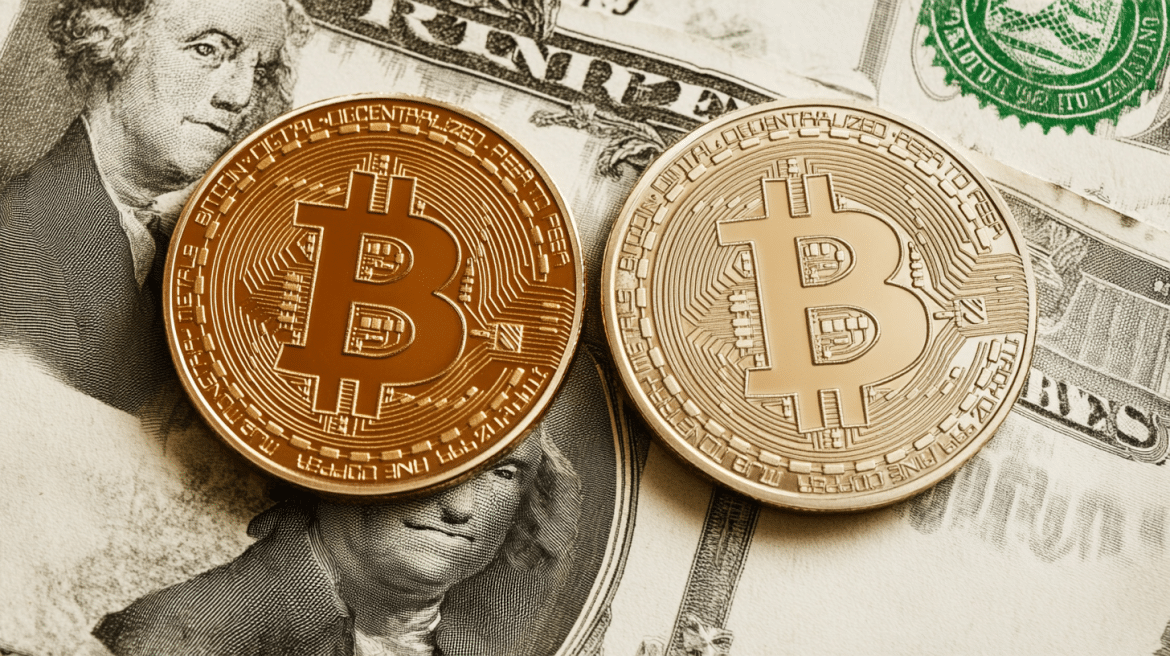Blockchain, the technology that powers Bitcoin, Ethereum, Dogecoin, and the entire crypto crew, is an old hat, having existed as a concept well before it got into practice. In layman’s terms, blockchain represents a database that stores information and records in a manner that permits every network participant to see, but not change.
The new data management approach is exactly what a decentralized money system needs, permitting money owners to gain control of their assets without involving outsiders like governments and central banks in the equation.
Nevertheless, Bitcoin started as a means of putting people in more control of their money and has been marketed as such for much of its debut. However, the asset began being painted in new colors over the last decade.
As the Bitcoin price rose to around 15,000% since 2009, leading up to the moment of writing, speculative minds learned it could be used to generate profits. So, instead of paying for pizza, like when Bitcoin was first used in a business operation, investors started to unearth a lucrative part of it. Fast-forward, and now people are wondering how much Bitcoin should be regarded as an investment and how much as currency.
Logically, an asset owned shouldn’t be spent on groceries if it can beat inflation and protect money from devaluation, contradicting its labeling as owner-empowering currency. But as an investment vehicle, you shouldn’t pour Bitcoin into goods and services, either, which leaves you with no choice but to keep it in your digital wallet for months or years. So, what’s the go with Bitcoin?
 A Quick Retrospective of Bitcoin’s Success
A Quick Retrospective of Bitcoin’s Success
Digital, encrypted currencies took little time to challenge the centuries-long global financial system and the motor that kept it working to date. In fact, just about a decade was enough for them to transform from a mere, newish technology whose concept was penned long ago into a trillion-dollar technology capable of disrupting the conventional financial landscape worldwide.
Rising numbers of individuals and investment firms now acquire and trade Bitcoin and other cryptos, holding it to create new financial products, diversify portfolios, pay for a swath of business offerings, and so on.
From digital real estate to software and holidays to charity, you can buy, donate, and pay with Bitcoin in places that may have not even crossed your mind. Businesses must only set up a specific payment gateway and digital wallet to allow customers, mainly tech-savvies, to acquire their products with crypto.
Worldwide regulations differ significantly, with some governments banning this money form while others making it legal tender. The once-largest crypto-generating country, China, forbids Bitcoin mining and usage, pushing miners to look for new ground with cheap electricity to keep cashing in on their CPUs and GPUs.
On the other hand, nations like El Salvador want to reduce their reliance on prominent currencies like the U.S. dollar through Bitcoin. Fifteen years after the emergence of the first cryptocurrency, Bitcoin, there are now around 130 countries, with the United States included, meditating on launching their own CBDCs, short for central bank digital currencies, to counteract the crypto phenomenon.
Evidently, Bitcoin has set the world on fire, and the show is far from reaching its final point.
Bitcoin Started as A Currency
Bitcoin, represented by “BTC” on crypto exchanges, is the first digital currency launched successfully after several other attempts to create virtual currencies. Just like Bitcoin’s creator intended for its development to be used as a form of payment uncontrolled by any entity, group, or person, the first programmers previously shared the same aspiration to contemplate this technology.
Bitcoin managed to eliminate the necessity of trusted third-party contributions in wealth transactions. Instead, it needs electricity that powers expensive mining equipment to generate blocks, rewarding one or a few of the individual or pooled computers verifying transactions.
Bitcoin’s developer or group of programmers, known under the pseudonym “Satoshi Nakamoto,” brought the technology to the attention of the broader audience in 2009. It has since become the largest crypto by market cap, standing at around $2.45TN, which is why many people use this and cryptocurrency interchangeably, though erroneously.
In Time, It Began Drawing Investors In
Kicking it off, pricing almost nothing, and managing to value a maximum of over $73K in 2024, Bitcoin couldn’t pass unnoticed by speculators and investors. The asset’s astronomical rise in popularity between 2009 and 2017 pushed many to buy, trade, and sell whole units or fractions of it in the search for profits.
Noteworthy, one of the best contributions of Bitcoin is that it can be fractionated into units as small as the buyer wants. This practice is only illustrative. A Bitcoin may value thousands, but you can break into crypto with as little as a dollar through a crypto platform exchange and build up knowledge and investing skills as you go.
After hitting a milestone in 2021 and selling for a whopping $69K, the flagship crypto’s listing price fell brutally. It caused hysteria within the financial system as it dropped to a depressing $15K and caused holes in investors’ pockets.
Nevertheless, investors lived to see Bitcoin bounce back during 2023, retain some of its lost value, and close the year at a little over $42K. In the months leading up to the well-anticipated halving, Bitcoin recovered and reattained the ATH breached the year before.
Bitcoin Is a White-Hot Investment in 2024
The flagship crypto started on the right foot this year, slowly but surely rising in value as investors were prepping for the quadrennial halving. Historically, Bitcoin has been proven to jump in price in the period following the mining reward reduction event, which keeps it disinflationary and scarce.
This adjustment draws investors in thanks to the demonstrated capacity to generate returns, which also occurred this year. Part of Bitcoin’s price-spiking game is attributed to this event, whereas another price catalyzer is represented by the SEC’s greenlighting of exchange-traded funds (ETFs).
Conclusion
Bitcoin has demonstrated that it can be both a revolutionary technology that works where the financial system failed and a vehicle for securing money against inflation and government control. If you want to invest in it, ensure you understand all the risks involved and think of a plan B in case the scenario doesn’t turn triumphant as you expected.


 A Quick Retrospective of Bitcoin’s Success
A Quick Retrospective of Bitcoin’s Success